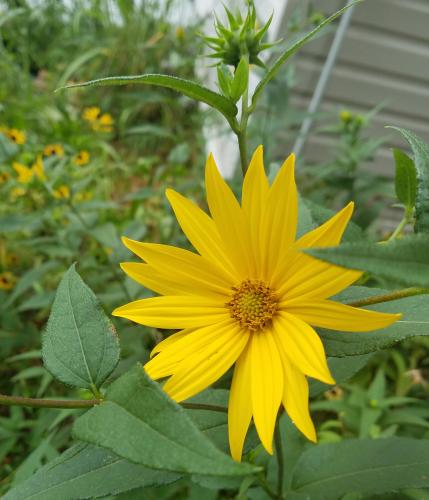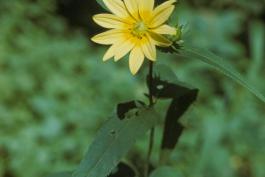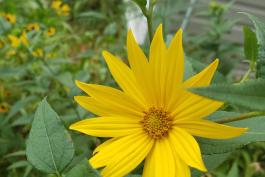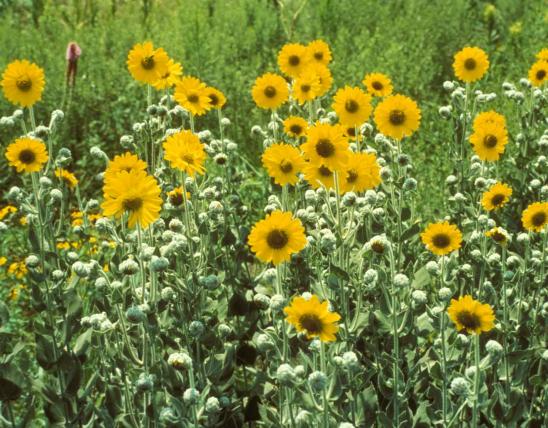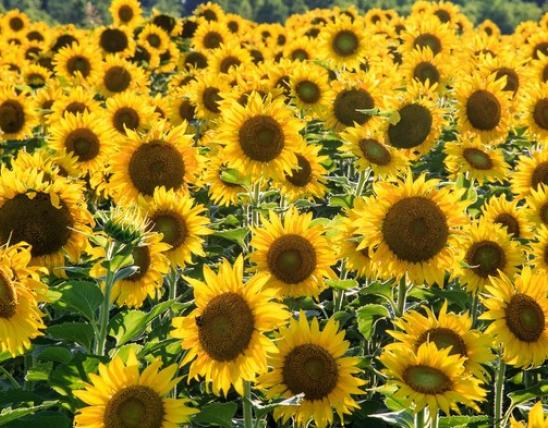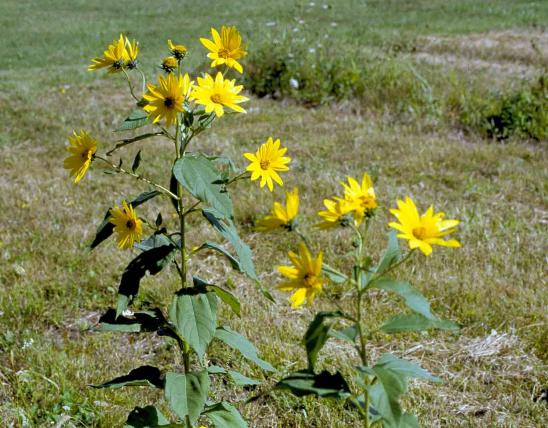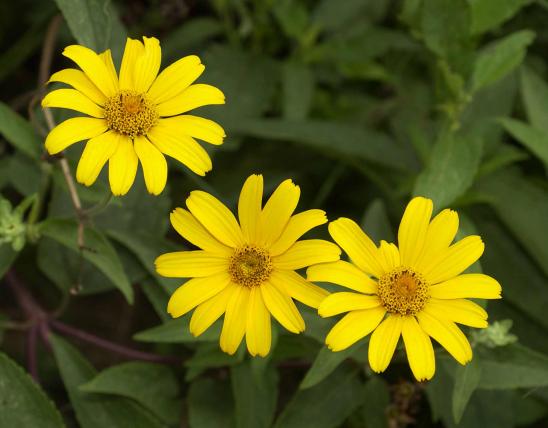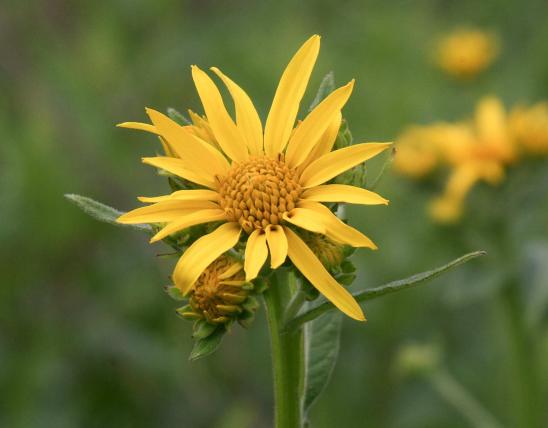
A giant perennial herb, usually branched, sometimes occurring in dense colonies of clumping stems. Lower stems often hairless, reddish, sometimes with a white waxy coating. Flowerheads all yellow, to 3½ inches across, with 10–25 fairly wide ray florets. Blooms July–October. Leaves sessile or with very short petioles, the petioles often with small wings. Leaves about 10 inches long and 2½ inches wide, coarsely toothed, lanceolate; upper leaves closely spaced, usually alternate.
Similar species: Sunflowers readily hybridize with each other, which can make identification difficult. Not counting hybrids, there are 16 species of Helianthus recorded for Missouri. This species is perhaps best identified by its leaves, which are mostly alternate, very narrow, folded lengthwise along the midvein, with flat (uncurled) leaf margins, and yellow disk florets.
For an overview of Missouri’s sunflowers, visit their group page.
Height: to 16 feet.

Scattered in the northern and western halves of the state; absent from most of the southeastern quarter of Missouri.
Habitat and Conservation
Bottomland and upland prairies, bases of bluffs, banks of streams and rivers, fens, and margins of ponds and lakes; also ditches, margins of cultivated fields, pastures, railroads, roadsides, and open, disturbed areas. One reason why sunflowers grow so tall is that in nature they compete with the eight-foot-tall grasses of our tallgrass prairies. They must raise their heads high in order to attract pollinators.
Human Connections
For Native Americans, sunflowers had a variety of medicinal and other uses. Today, people value sunflowers mostly for the great beauty they give to roadsides, fencerows, and fields in late summer, a grand finale of flowers before the purples, oranges, and reds of autumn steal the show.
Ecosystem Connections
Sunflowers provide nectar and pollen to a great variety of insects, plus a hunting ground for spiders, assassin bugs, and other predators of the many insects attracted to the flowers. When the flowers are spent, birds and mammals, including finches and rodents, relish the sunflower seeds.


